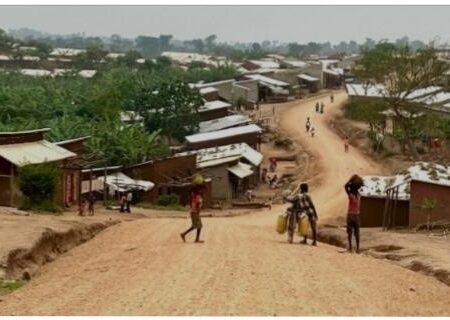
Introduction
The German occupation of the British Channel Islands during World War II represents an extraordinary chapter in the history of the war. From 1940 to 1945, the islands of Jersey, Guernsey, Sark, and Alderney were under Nazi control, making them the only British territory to fall under direct German occupation during the war. Despite this unique role in World War II history, the occupation of the Channel Islands remained a relatively overlooked topic for a long time. Only in recent decades has interest in the living conditions of the civilian population and the political dynamics during the occupation intensified.
In the years following the war, the occupation of the Channel Islands was often portrayed as relatively “mild.” Compared to the atrocities that occurred in much of occupied Europe, life on the islands initially seemed less marked by the brutal aspects of Nazi rule. The islands were occupied without major combat, and during the five years of occupation, there was neither widespread destruction nor open fighting. However, this apparent “peace” masked the harsh realities faced by the civilian population.
In truth, the living conditions of the islanders were marked by deprivation, uncertainty, and constant adaptation to the directives of the German occupiers. The war almost completely severed the islands from their British homeland, and the population increasingly had to cope with food shortages, restricted freedom of movement, and the constant presence of German soldiers. Economic isolation worsened, particularly in the final years of the war, when supplies dwindled, leaving the people to suffer from hunger and cold.
Daily life was dictated by the constraints of occupation policies: strict regulations, forced labor, and repression became the new normal. At the same time, the inhabitants had to learn to live under the omnipresent control of the occupying forces, who monitored every aspect of public and private life.[2] The distance from the British mainland and the isolation intensified the sense of abandonment and helplessness.
Alderney, the smallest of the inhabited Channel Islands, was a particularly grim example of the harshness of the occupation period. It was the only island to be fully evacuated before the Germans arrived, and it was transformed into a center for forced labor and concentration camps. Here, the brutality of the Nazi occupation regime on the Channel Islands was displayed in stark relief.
This article takes a closer look at the everyday reality of the civilian population on the Channel Islands during the occupation. The focus is on the daily challenges caused by the lack of resources, the strict regulations imposed by the German authorities, and the social isolation. The different experiences across the individual islands will also be examined, with a special focus on Alderney. The aim is to present a nuanced view of the occupation period and to highlight the complex experiences of the civilian population.
Life on the Islands
The German occupation of the Channel Islands from late June 1940 to May 1945 posed numerous challenges for the population. What initially appeared to be a relatively calm and non-violent occupation was, in reality, a period of deprivation and uncertainty that deeply affected the daily lives of civilians. Life on the islands was shaped by several factors: economic isolation, food shortages, restrictions on personal freedoms, and the constant presence of the German occupiers.[3] The population was forced to adapt to these new circumstances, often pushing themselves to the limits of what was possible.
One of the biggest challenges for the islanders during the occupation was economic isolation. Due to Britain’s strategic decision not to defend the islands, they were cut off from British supply lines. Before the occupation, the Channel Islands had primarily benefited from agriculture and fishing.[4] However, the occupation severed these connections, leaving the islands dependent on the Germans for essential goods.
The food supply deteriorated rapidly, especially in the final years of the war, as Germany itself struggled with shortages. Basic necessities such as bread, meat, and milk were heavily rationed, and islanders increasingly relied on local produce and growing their own food. In Guernsey and Jersey, communal gardens were established to grow vegetables and alleviate the food shortages. Despite these efforts, supplies were often insufficient, leading to malnutrition and diseases caused by a lack of proper nutrition.
A particularly harsh blow for the islands was the shortage of fuel and other energy resources. Coal, which was not mined on the islands, became almost unavailable, forcing the population to rely on wood for heating and cooking. As a result, many forests on the islands were cleared, causing lasting environmental damage. Electricity was also severely limited, and many islanders had to live by candlelight and give up using household appliances. These daily hardships made life on the islands increasingly difficult as the war dragged on.[5]
The increasing scarcity of food was a central issue during the occupation. The rationing, which was introduced at the beginning of the occupation, was initially moderate but became more severe over time. The German occupying forces were given priority in food distribution, often leaving the civilian population in precarious situations. In the final years of the occupation, the situation grew increasingly dire as supply lines to Germany were cut off by the advancing Allies. Foods that were once taken for granted, such as bread, meat, and sugar, became nearly impossible to obtain.
Many families tried to acquire additional food through bartering or illegal trade. There were also reports of theft and looting of food stores, though such actions were harshly punished by the German occupiers.[6] People increasingly turned to alternative food sources, including plants and animals they would not have previously considered for consumption. Potato peels, nettles, and even seaweed became important sources of nourishment.[7]
In addition to material deprivations, life on the islands was marked by extensive restrictions on personal freedoms. The German occupying authorities implemented a rigid regime of control that severely limited the population’s freedom of movement. A curfew was imposed, prohibiting people from being outside after dark.[8] Access to certain public places, such as beaches or parks, was also heavily regulated to prevent possible escape attempts.
Communication with the British mainland and the outside world was also severely restricted. Radio broadcasts were monitored and sometimes confiscated, and postal correspondence was heavily censored. The islanders were largely cut off from news from Britain and had to rely on information controlled by German propaganda.[9] This isolation, both physical and mental, had a profound impact on the morale of the civilian population. The sense of being cut off from the outside world and the uncertainty about the war’s progress significantly contributed to the psychological strain they endured.
The psychological impact of the occupation on the civilian population should not be underestimated. Living under constant surveillance, the fear of repression, and uncertainty about the future led many people to experience chronic stress.[10] The German troops were omnipresent, and the population lived in constant fear of denunciations or arbitrary arrests. This created a climate of mistrust and restraint, in which social bonds and the sense of community were severely weakened.
Alderney as a Separate Example
Among the four occupied Channel Islands, Alderney holds a particularly grim position. While Jersey, Guernsey, and Sark remained inhabited by their residents during the occupation, Alderney experienced an almost complete evacuation of its local population and became the site of Nazi atrocities. The island, previously known as a quiet and rural retreat, was transformed into a central location for the construction of defensive fortifications and the establishment of labor and concentration camps. The occupation of Alderney starkly illustrates how brutal German rule could be, even on the Channel Islands, and stands in stark contrast to the experiences of the other islands.

© Deniz Tunçer
Even before the arrival of German troops in June 1940, Alderney witnessed a near-complete evacuation. Of the approximately 1,500 islanders, the majority were evacuated to Britain as the German advance in France became imminent. This decision by the British government and the island’s administration to evacuate the population stood in contrast to the choices made on Jersey and Guernsey, where the residents largely remained. In many ways, this evacuation turned Alderney into an almost uninhabited zone, giving the Germans free reign over the territory.
Following the evacuation, the island became a strategically significant stronghold in the German defense strategy. The Germans planned to use Alderney as a central point in their “Atlantic Wall,” a vast defensive line constructed along the European coastline to ward off an Allied invasion. This decision led to an extensive development of the island, forever altering the face of Alderney.
The darkest episode of the occupation on Alderney was the establishment of four camps, officially designated as labor camps but closely resembling concentration camps. The camps were named Helgoland, Norderney, Borkum, and Sylt, after islands in northern Germany. They were set up starting in 1942 and housed forced laborers, primarily from Eastern Europe, who were compelled to build military installations under extreme conditions. Camp Sylt was particularly notorious, as it was run by the SS and primarily held prisoners of war. The prisoners were subjected to forced labor under inhumane conditions, including the construction of bunkers, artillery emplacements, and defensive structures. Many died from exhaustion, malnutrition, or were brutally mistreated by the guards. Historians estimate that around 400 prisoners lost their lives on Alderney, though the exact numbers are difficult to determine, as many bodies were buried in mass graves or thrown into the sea.

A study commissioned in Britain is now aiming to provide more precise figures:
“Initial estimates after Alderney’s liberation by the British suggested that 389 people died as a result of the mistreatment. However, after reviewing the death rates, the Alderney Expert Review Panel is confident that the death toll on Alderney likely did not exceed 1,134 people, with a more realistic estimate being between 641 and 1,027 fatalities.”[11]
Tragically, the atrocities that took place in these camps received little attention for a long time. In the post-war period, other events related to the Holocaust and German war crimes took center stage, and the events on Alderney were largely forgotten. It is only in recent decades that the full extent of the crimes on the island has been thoroughly investigated, and historical studies have shed light on the brutal nature of the occupation on Alderney.
Alderney was of strategic interest to the Germans because the island had the capability to control shipping in the English Channel and presented a potential target area for an Allied invasion. Alderney’s geographic location made it an ideal site for constructing bunkers, gun emplacements, and other military fortifications, which were intended to serve as part of the Atlantic Wall. Thousands of forced laborers and prisoners of war were brought to Alderney to build these fortifications.[12] The work was grueling and dangerous, and many of the workers perished due to accidents, poor working conditions, or sheer exhaustion. The bunkers and defensive structures built by the Germans still dominate the landscape of Alderney today, serving as a grim reminder of the island’s militarization during the war.
Despite the massive effort the Germans invested in fortifying the island, the defensive installations played little role in the later stages of the war. Alderney, like the other Channel Islands, was bypassed by the Allies when they landed in Normandy in June 1944. The occupation forces on Alderney did not surrender until May 16, 1945, about a week after Germany’s capitulation in Europe, and the island was then returned to British control.
The process of coming to terms with the past was a difficult one for the people of Alderney, as it was for the residents of the other Channel Islands. The memory of the atrocities committed on the island and the presence of military installations made a full return to normalcy nearly impossible. For many years, islanders remained silent about the occupation years, and only decades later did a systematic confrontation with the crimes committed on Alderney begin.
Alderney serves as a striking example of how varied the experiences of occupation on the Channel Islands could be. While the other islands remained inhabited by their residents, Alderney became a largely deserted outpost used for forced labor by the Nazis. The establishment of the camps, the inhumane conditions of forced labor, and the massive expansion of defensive fortifications left a lasting mark on the island. These events are not only a significant chapter in the history of the Channel Islands but also an important aspect of Nazi occupation policies during World War II.
Conclusion
The German occupation of the British Channel Islands was a challenging and burdensome time for the civilian population. Contrary to the often romanticized notion of a relatively “soft” occupation, the reality presented significant hardships: economic isolation led to severe shortages, hunger, and the necessity for self-sufficiency, while constant surveillance and restrictions on personal freedoms fostered an atmosphere of fear and uncertainty. The psychological toll of these years, coupled with the breakdown of social cohesion, left a deep impression on the islanders.
Alderney stands out as a particularly tragic example. The evacuation of the island and the establishment of forced labor and concentration camps under Nazi control highlighted the brutality and cruelty with which the occupiers operated. While the other islands at least retained some of their civilian structure, Alderney was transformed into a military fortress, the remnants of which are still visible today.
Overall, the occupation of the Channel Islands reveals how harsh life under enemy control could be, even in a relatively isolated and distant part of Europe. For the islanders, survival was a daily struggle, often in extreme conditions of fear, deprivation, and oppression, with the constant threat of being taken to Alderney as forced laborers.
Literature and suggested Literature for Interested Peers
Bunting, Madeleine: The Model Occupation. The Channel Islands under German Rule 1940-1945.
London 2004
Gannon, Megan: Lager Sylt: Archäologen werfen Licht auf ein „vergessenes“
KZ auf Kanalinseln. National Geographic, 1. April 2020.
https://www.nationalgeographic.de/geschichte-und-kultur/2020/04/archaeologen-werfen-licht-auf-
ein-vergessenes-kz-auf-kanalinseln
Interviewee Nro. 1. Conducted on 14th August 2024 via Zoom (wishes to remain anonymous)
Interviewee No. 2. Conducted on 17th August 2024 via telephone (wishes to remain anonymous)
Nettles, John: Jewels and Jackboots. Hitler’s British Channel Islands. Jersey 2012
Von Aufseß,Hans Max: Tagebuch aus der Okkupationszeit der britischen Kanalinseln 1943-1945. Hamburg: Osburg Verlag 2020
[1] Source for picture: https://www.bbc.com/news/articles/c99zw10vg07o
[2] Tobias Arand, Vorwort in: Hans Max von Aufseß. Tagebuch aus der Okkupationszeit der britischen Kanalinseln 1943-1945. Hamburg: Osburg Verlag 2020,S. 15-16
[3] Nettles, John: Jewels and Jackboots. Hitler’s British Channel Islands. Jersey 2012, p. 56-57
[4] Interviewee No. 2
[5] Interviewee No. 2
[6] Interviewee No. 1
[7] Interviewee No. 2
[8] Nettles, 2012
[9] Arand, 2020
[10] Interviewee No. 2
[11]The Lord Pickles Alderney Expert Review, p. 4
[12]The Lord Pickles Alderney Expert Review, p. 5-6














Since I focused more on Nazi Germany in school, I enjoyed learning more about World War II from this dialogue. I had not heard of the German occupation of the Channel Islands, or the severity of their mistreatment. I liked the focus on Alderney, and the author explained how this island was impacted differently. I am curious about going deeper into how each island was impacted by the German occupation, and what was the aftermath for the islands.